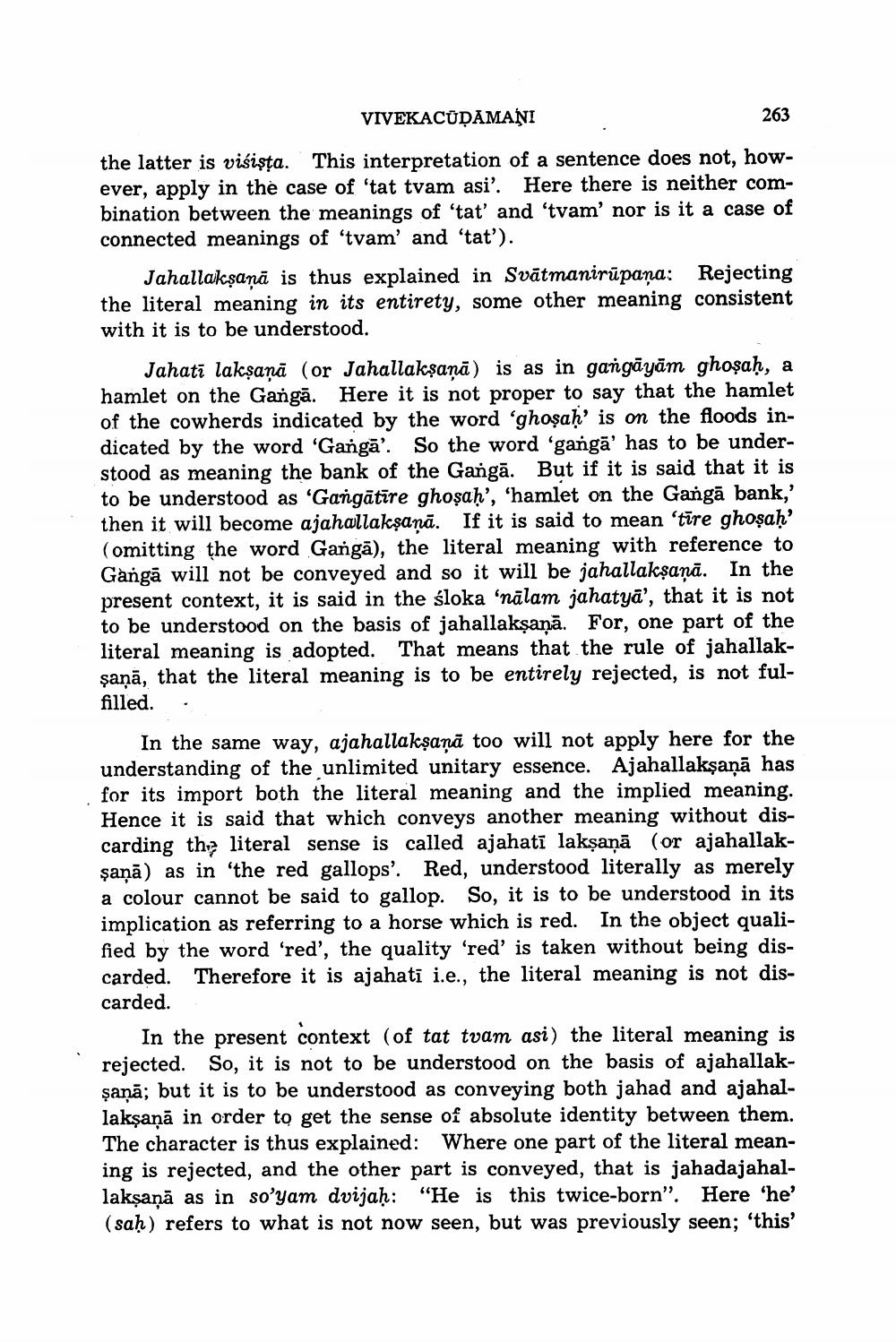________________
VIVEKACŪDAMANI
263
the latter is visişta. This interpretation of a sentence does not, however, apply in the case of 'tat tvam asi'. Here there is neither combination between the meanings of 'tat' and 'tvam' nor is it a case of connected meanings of 'tvam' and 'tat').
Jahallaksana is thus explained in Svātmanirūpana: Rejecting the literal meaning in its entirety, some other meaning consistent with it is to be understood.
Jahati laksanā (or Jahallakşaņā) is as in gangāyām ghoṣaḥ, a hamlet on the Gangā. Here it is not proper to say that the hamlet of the cowherds indicated by the word 'ghoṣaḥ' is on the floods indicated by the word 'Gangā'. So the word 'gangā' has to be understood as meaning the bank of the Gangā. But if it is said that it is to be understood as 'Gangātīre ghoṣaḥ', 'hamlet on the Gangā bank,' then it will become ajahallakşaņā. If it is said to mean 'tīre ghoṣaḥ (omitting the word Gangā), the literal meaning with reference to Gangā will not be conveyed and so it will be jahallakşaņā. In the present context, it is said in the sloka 'nālam jahatya', that it is not to be understood on the basis of jahallaksanā. For, one part of the literal meaning is adopted. That means that the rule of jahallakşanā, that the literal meaning is to be entirely rejected, is not fulfilled. .
In the same way, ajahallakşanā too will not apply here for the understanding of the unlimited unitary essence. Ajahallaksanā has for its import both the literal meaning and the implied meaning. Hence it is said that which conveys another meaning without discarding the literal sense is called ajahatī lakşanā (or ajahallakşanā) as in the red gallops'. Red, understood literally as merely a colour cannot be said to gallop. So, it is to be understood in its implication as referring to a horse which is red. In the object qualified by the word 'red', the quality 'red' is taken without being discarded. Therefore it is ajahati i.e., the literal meaning is not discarded.
In the present context (of tat tvam asi) the literal meaning is rejected. So, it is not to be understood on the basis of ajahallakşanā; but it is to be understood as conveying both jahad and ajahallaksanā in order to get the sense of absolute identity between them. The character is thus explained: Where one part of the literal meaning is rejected, and the other part is conveyed, that is jahadajahallaksaņā as in so'yam dvijah: "He is this twice-born". Here 'he' (sah) refers to what is not now seen, but was previously seen; 'this'




